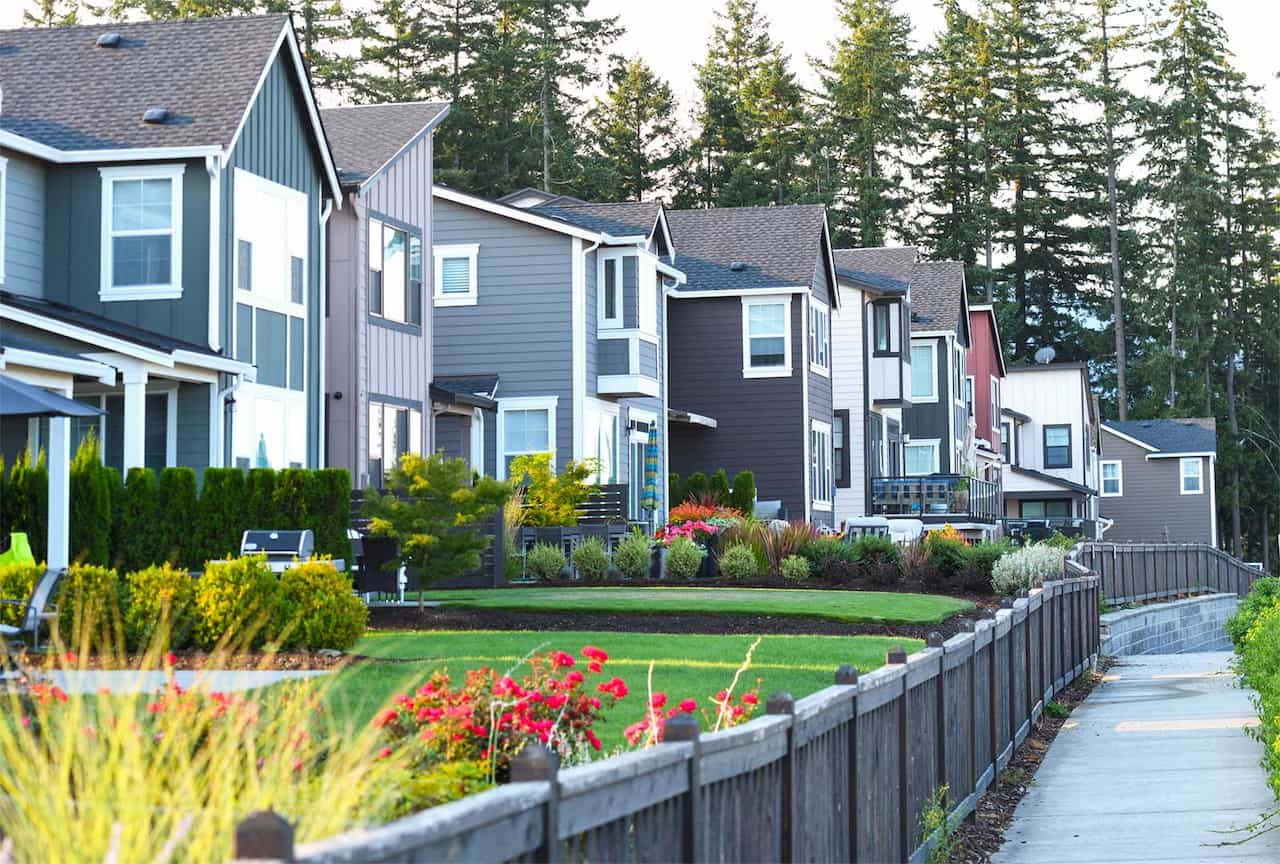We can provide much needed housing while supporting our tree canopy.
Thoughtful planning for housing and trees creates healthier communities.
Balanced tree codes help our communities address the housing crisis and protect our region’s trees. A good tree code lays the foundation to responsibly maintain or grow the level of tree coverage in a city while also allowing for much-needed housing to be built. Check out the FAQs below and if you would like more information take a look at our fact sheet.
We’re here to answer your questions.
What is tree canopy?
Tree canopy is defined as how much of an area of land (by percentage) is covered by trees, as seen from an aerial view. Tree canopy typically includes the branches, leaves or other foliage from woody vegetation, at least five feet in height, that provide shade. Tree canopy is also called tree cover.
Why do we measure tree canopy?
How do tree policies impact property owners?
Most municipalities regulate whether an individual tree can be removed – and when and where it should be replaced. Property owners are not usually engaged in the process of developing these policies. These regulations can be a major factor in determining if a parcel of land can be developed for new housing or if a homeowner can expand or renovate their existing home.
Do the policies apply differently to public vs. private property?
Environmental stewardship and building more housing are both important needs in our communities. How can we have both?
It is important that tree policies are balanced, providing flexibility for property owners and builders. There are times when a homeowner or builder needs to remove trees to build. Policies that allow for trees to be planted in other locations ensure we can preserve tree canopy while also meeting our community’s need for more housing.
What happens when tree ordinances are overly restrictive?
By imposing strict requirements to preserve trees exactly as they are, these policies limit or prevent the ability to build or expand homes, thereby curtailing the rights of property owners. These policies can impact the supply of available and affordable housing in communities, preventing new homes from being built. As cities look to enact and update tree codes, it is vital that they do not undermine the community’s housing needs by enacting overly restrictive tree codes.
Housing affordability and homelessness are big concerns for our communities. How do these issues factor into discussions about tree policy?
There are many contributing factors that have driven up the costs of housing in our region and exacerbated the homelessness crisis. The low availability of affordable housing throughout the region is an especially significant issue. We can’t begin to solve the affordability crisis until we increase the supply of housing, particularly at accessible price points. Tree policies that stand in the way of increasing the supply of new housing create an additional barrier to solving our housing crisis.
How does a balanced tree code help support our region’s environmental and housing goals?
I am interested in learning more about this issue – what can I do to stay informed?
Sign up here to receive updates about tree policies in your area and connect with us on social media. We’ll share tools you can use to engage with your municipal government to advocate for responsible tree policies that do not infringe on property rights or impede responsible homebuilding.
Want to stay informed?
Visit our stay informed page to receive updates about tree policies in your area, connect with us on social media and use these tools to engage with your municipal government to advocate for responsible tree policies that do not infringe on property rights or impede responsible homebuilding.

